Did you know? More than 60% of driveway repairs in the spring are due to preventable winter damage. Acting now can prevent costly repairs and extend the life of your driveway. As winter barrels closer, tiny cracks and hidden weaknesses in your driveway could snowball into expensive repairs overnight—unless you take action this fall. In this guide, you’ll learn why urgent, seasonal maintenance can protect your driveway from winter damage and safeguard your property before the first freeze hits.
The Hidden Dangers of Winter Driveway Damage: Why You Must Protect Driveway From Winter Damage
When winter arrives, your driveway faces relentless threats—from freezing temperatures and snow to relentless thaw cycles and corrosive deicing chemicals. Even minor surface damage today can evolve into major cracks or crumbling concrete slabs thanks to the freeze–thaw cycle. The onset of winter exacerbates existing weaknesses, with each episode of melting snow or ice amplifying the problem. If left unchecked, what starts as a tiny crack on your concrete driveway can unleash a multiplier effect, jeopardizing the structural integrity of the entire drive by spring.
Unfortunately, gravel, asphalt, and even concrete driveways are all susceptible. If water infiltrates cracks and the temperatures drop, the water expands as it freezes—widening those cracks and accelerating deterioration. Heavy snow and the use of aggressive deicing chemicals, like calcium magnesium acetate, may seem essential for safety, but they can also harm your driveway’s surface. It’s not just about appearance, either; foundation repair for concrete slabs can be expensive and disruptive. Taking preventive measures now is the best way to save money and preserve curb appeal throughout the harsh winter months.
“Did you know? More than 60% of driveway repairs in the spring are due to preventable winter damage. Acting now can prevent costly repairs and extend the life of your driveway.”
What You’ll Learn About How to Protect Driveway From Winter Damage
-
The science behind winter driveway damage
-
Maintenance steps for gravel, asphalt, and concrete driveways
-
The advantages of early seasonal repairs
-
How to choose between sealcoating, patching, and resurfacing
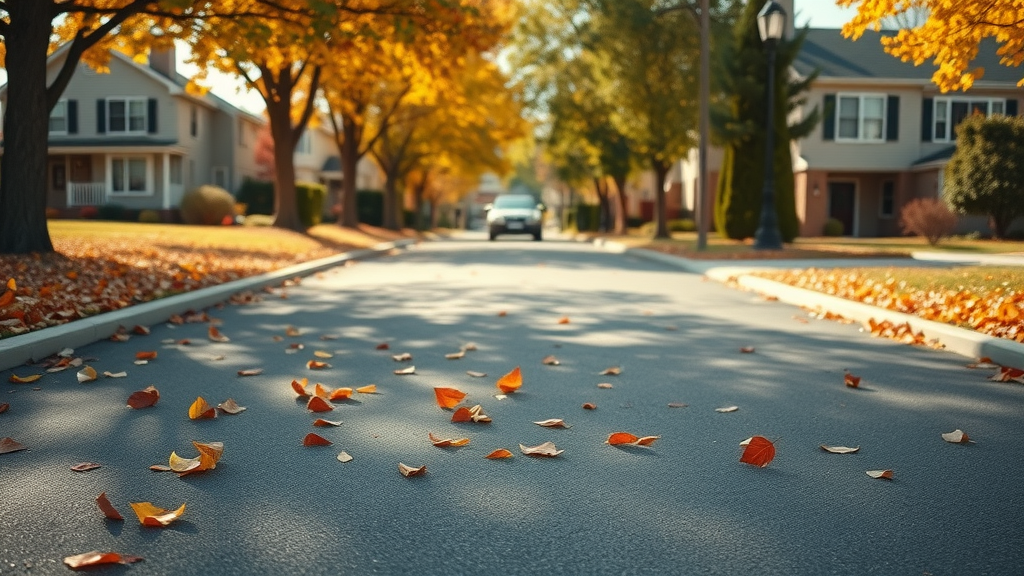
Understanding Winter Damage: How Cracks Form and Why You Should Protect Your Driveway
Most homeowners don’t notice small cracks in the driveway until spring—when they’ve blossomed into potholes or widespread surface damage. These cracks start innocuously, forming over time due to everyday wear, exposure to sunlight, and the infiltration of rain or melting snow. Once water seeps in and gets trapped below the concrete slab or in the base of an asphalt or gravel driveway, things quickly get worse when temperatures drop. The freezing and thawing process causes the trapped water to expand, often doubling or tripling the size of even tiny cracks in just one season.
On top of this, snowplows, plastic shovels, and aggressive snow removal tools can scratch or gouge the surface, especially on already compromised areas of your winter driveway. Deicing chemicals, particularly those containing calcium chloride or magnesium acetate, make matters worse by speeding up the breakdown of the concrete or asphalt. The end result? What once was a minor blemish becomes a major repair—sometimes requiring full foundation repair or costly concrete driveway replacement.
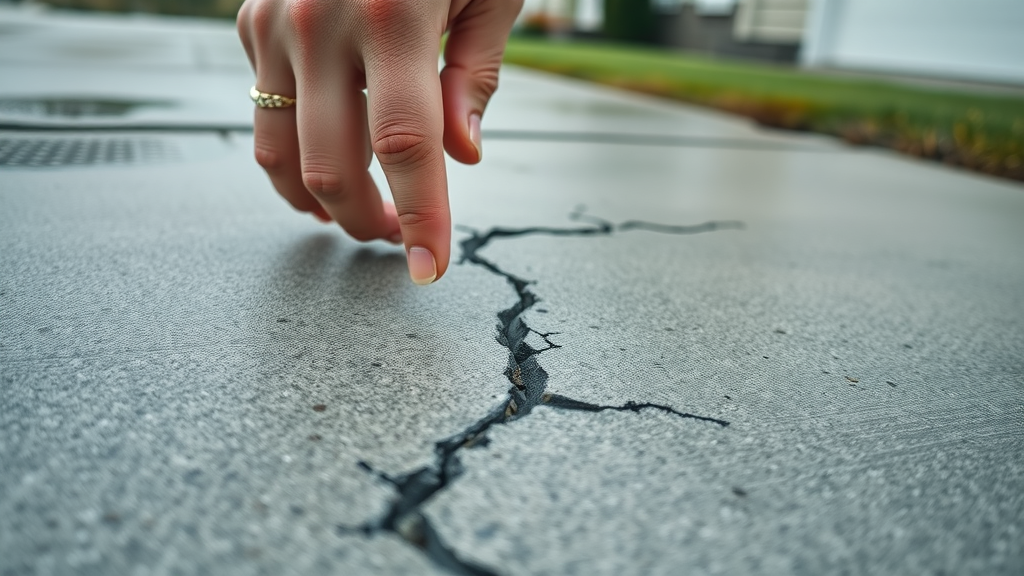
The Multiplier Effect: Small Cracks Lead to Major Winter Damage
-
Freeze–thaw impact on concrete slab and concrete driveway
-
How water infiltration accelerates driveway deterioration
-
Common causes in both asphalt and gravel driveways
It’s easy to underestimate the damage a small crack can cause. Yet, due to the freeze–thaw cycles so common in places like Minnesota and Wisconsin, water enters those little fissures, freezes, and expands with enough force to break apart concrete slabs or destabilize a gravel base. This creates larger cracks, potholes, and in severe cases, dangerous structural issues that demand major foundation repair. Over one difficult winter, cracks multiply and worsen, especially when combined with salt, sand, and the scrapes from relentless snow removal.
Avoiding winter damage isn’t just an aesthetic concern. Allowing the situation to fester through repeated freezing temperatures will threaten the longevity and safety of any concrete or asphalt driveway. Without intervention, next spring may bring not only repair bills but also a sharp drop in the property’s overall curb appeal.
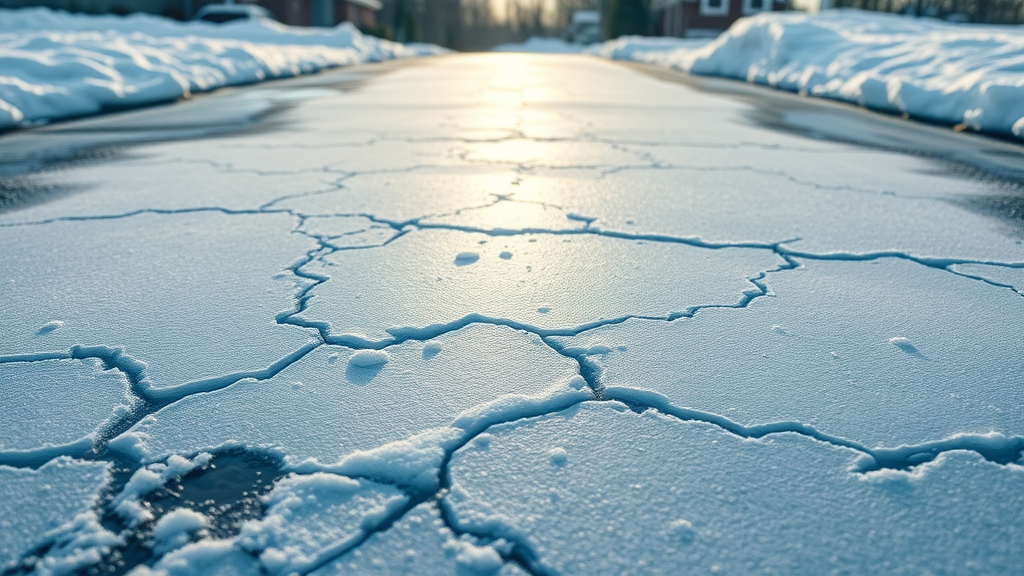
The Science Behind Winter Driveway Damage
Winter driveway damage is driven by two powerful natural phenomena: freeze–thaw cycles and frost heave. When water seeps into cracks and the temperature dips below freezing, it expands, putting tremendous pressure on both concrete slabs and asphalt surfaces. With every warming spell, the trapped ice melts—only to freeze and expand again the next night. This constant cycle weakens your driveway’s foundation, leading to surface damage and even major structural issues over time. Frost heave is particularly insidious, as water beneath the driveway freezes, lifts the surface, and causes cracks to spread or the entire slab to become uneven.
Beyond just water, the chemicals you use to treat your winter driveway can also cause lasting harm. Popular deicing chemicals like calcium magnesium acetate and rock salt can accelerate the breakdown of concrete driveways, corroding the material and amplifying existing cracks. Even snowplow activity poses risks, with heavy pressure scraping off protective layers and exposing new vulnerabilities. To protect driveway from winter damage, it’s essential to counteract these effects with proactive measures each fall.
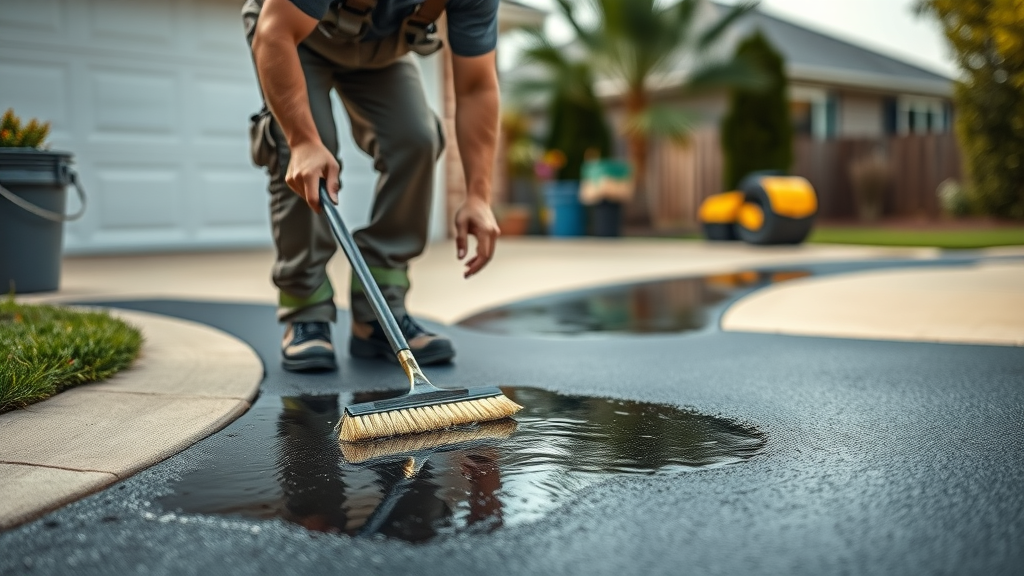
Freeze–Thaw Cycles and Frost Heave: Protecting Your Driveway Foundation
-
Explanation of frost heave and its effect on concrete slabs
-
The role of water expansion in crack widening
-
Impact of deicing chemicals and snowplow activity
Freeze–thaw cycles, often overlooked by homeowners, are the primary culprit behind winter driveway damage. Each cycle starts innocently enough: melting snow or rainfall enters tiny imperfections on your driveway’s surface. When freezing temperatures strike, the water turns to ice and expands—cracking the surface even further. After a few cycles, cracks in a concrete driveway may be wide enough to invite even more water, fueling a destructive feedback loop. Frost heave further complicates matters, as soil beneath the slab freezes and expands, lifting and sometimes fracturing the surface above.
Chemical deicers can be both a blessing and a curse during the winter months. While products like calcium magnesium acetate and magnesium chloride prevent ice formation, they can also penetrate porous concrete, hastening deterioration and promoting surface damage. Even tools used for snow removal, such as snowplows and plastic shovels, pose risks to compromised areas. It’s vital to select gentle deicing products and snow removal methods to extend the life of your winter driveway and limit the need for costly foundation repair.

Why Fall Is the Ideal Time to Protect Your Driveway From Winter Damage
Fall offers a golden window of opportunity to protect your driveway from winter damage—before cold weather and repeated freeze–thaw cycles can wreak havoc. Milder temperatures allow sealants and repair materials to properly cure, ensuring a stronger bond and better long-term results. Early repairs prevent water from seeping into cracks, reducing the risk of major expansion and surface failure when winter arrives. Contractors also have more flexible schedules in the fall, making it easier to secure a thorough inspection or quick fix before the busy spring rush.
By comparison, waiting until spring means working in unpredictable conditions, dealing with the backlog of winter damage repair requests, and often settling for patchwork rather than durable, preventative repairs. When you invest in early maintenance, you extend the life of your concrete driveway or asphalt surface and minimize future costs and inconvenience—all while keeping your property looking its best throughout the harsh winter driveway season.
|
Comparison: Fall vs. Spring Driveway Maintenance |
||
|
Maintenance Factor |
Fall |
Spring |
|---|---|---|
|
Temperatures |
Mild/Optimal |
Unpredictable |
|
Contractor Availability |
More Punctual |
High Demand |
|
Repair Longevity |
Longer-lasting |
Often Patchwork |
Top Strategies to Effectively Protect Driveway From Winter Damage
Protecting your driveway from winter hazards starts with proactive attention to small defects. Depending on the age and material of your driveway—gravel, asphalt, or concrete—there are proven techniques to shield it from freeze–thaw cycles, heavy snow, and deicing chemicals. Affordable methods like crack filling and patching, applying a fresh sealcoat, or even full resurfacing can all improve resilience and prolong your driveway’s lifespan. By acting before the onset of freezing temperatures, you’ll prevent ice from settling in cracks and mitigate the need for a major foundation repair in the spring.
Don’t overlook the role of routine winter driveway care: timely snow removal with a plastic shovel, judicious use of gentle deicing agents, and immediate repairs to any new damage can make all the difference in preventing expensive deterioration and preserving curb appeal, even during the harshest winter driveway season.
Sealcoating: Key to Protecting Your Driveway From Moisture and Chemicals
Sealcoating is one of the most effective ways to protect your driveway from winter damage. By applying a protective, waterproof layer over the surface, sealcoating locks out water, salt, and deicing chemicals while defending against the freeze–thaw action so damaging to concrete slabs and asphalt surfaces. Sealing your concrete driveway in the fall is ideal, as it provides a barrier against melting snow and corrosive chemicals throughout the winter months. This simple measure can prevent ice from forming within cracks, reduce erosion from snowplow blades, and minimize the risk of major foundation repair.
For gravel and asphalt driveways exposed to harsh winter weather, sealcoating also boosts durability and limits the risk of rapid deterioration. Always opt for professional service, ensuring the sealant is properly tailored to your driveway’s material and applied under optimal conditions. Regular sealcoating every 2–3 years helps prevent damage and maintain year-round curb appeal.
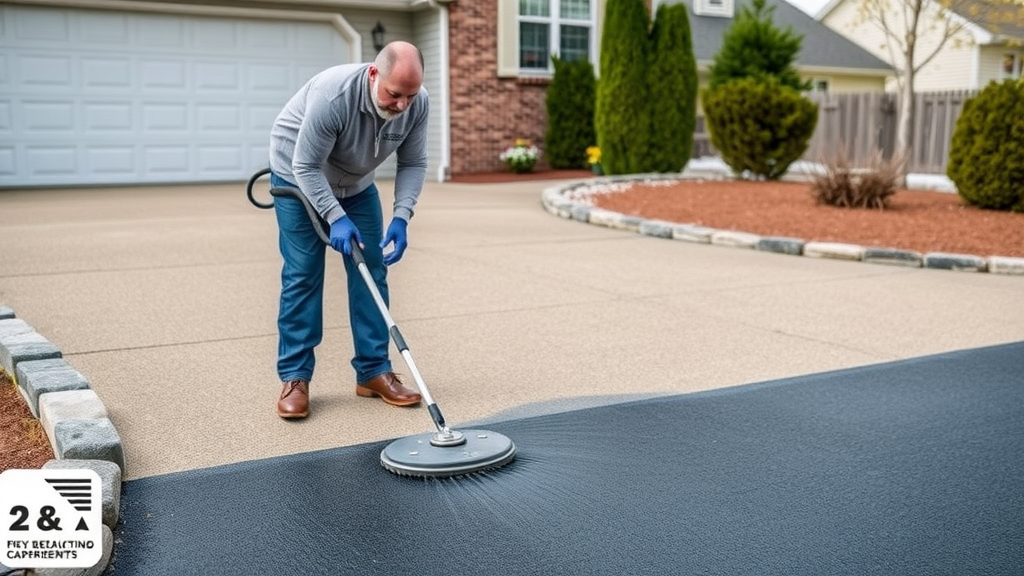
Crack Filling and Patching: Affordable, Immediate Winter Driveway Protection
Crack filling and patching provide fast, cost-efficient protection—especially if your driveway has several small cracks or areas of surface damage. Using high-quality crack fillers and flexible patch materials, you can quickly seal openings and halt the infiltration of water, snow, and corrosive deicing chemicals. These repairs significantly reduce the risk of freeze–thaw expansion—a leading contributor to springtime foundation repair bills for concrete slabs. Because the process is simple and relatively quick, even DIYers can handle minor repairs on a weekend, but for larger or recurring cracks, professional service is recommended for lasting results.
It’s not just asphalt or concrete driveways that benefit. Gravel driveways also suffer from washouts and potholes after heavy snow and melting events. Patching low spots and ensuring proper grading before winter will minimize future surface damage and make snow removal easier. By fixing weak points now, you eliminate opportunities for cold weather and ice to magnify existing flaws, and set the stage for a worry-free winter driveway season.
When to Opt for Repaving or Resurfacing Your Concrete Driveway
-
Signs your concrete driveway needs full foundation repair
-
Preventive measures for concrete slabs and asphalt
-
Choosing the best winter driveway protection option for your property
If cracks are wide, deep, or run throughout your driveway, basic patching and sealcoating may not offer enough protection. In such cases, repaving or resurfacing becomes necessary to restore structural integrity and prevent ongoing winter damage. Widespread crumbling, shifting, or sinking of your driveway surface often points to deeper foundation issues—sometimes caused by years of ignored freeze–thaw cycles and poor drainage. A professional inspection can reveal whether spot repairs will suffice or if a full concrete driveway replacement is the safest option. Resurfacing with a new top layer can resolve most intermediate-level issues—just be sure to act before freezing temperatures prevent damage from escalating further.
Preventative measures like sealing joints, filling gaps, and correcting drainage remain important even after major repairs. These strategies limit new cracks from forming in winter months and help protect your investment year after year. Whether you need a minor fix or a complete overhaul, acting before heavy snow and freezing weather ensures the best results and a smooth winter driveway experience.
The Benefits of Acting Now to Protect Your Driveway From Winter Damage
Taking steps now to protect driveway from winter damage isn’t just about avoiding short-term problems. By investing in early repairs and seasonal maintenance, you can minimize the risk of costly future foundation repair, boost curb appeal throughout the winter, and dramatically increase the lifespan of your concrete slabs or asphalt. Procrastination only leads to more severe damage from freeze–thaw cycles, meaning larger cracks, uneven surfaces, and a bigger repair bill come spring. A pristine, well-sealed driveway allows for easier and safer snow removal, less risk of surface damage, and peace of mind as the winter months unfold.
Ready to maximize your property’s value and avoid the common pitfalls of winter driveway neglect? Take preventive measures now and enjoy trouble-free winters for years to come.
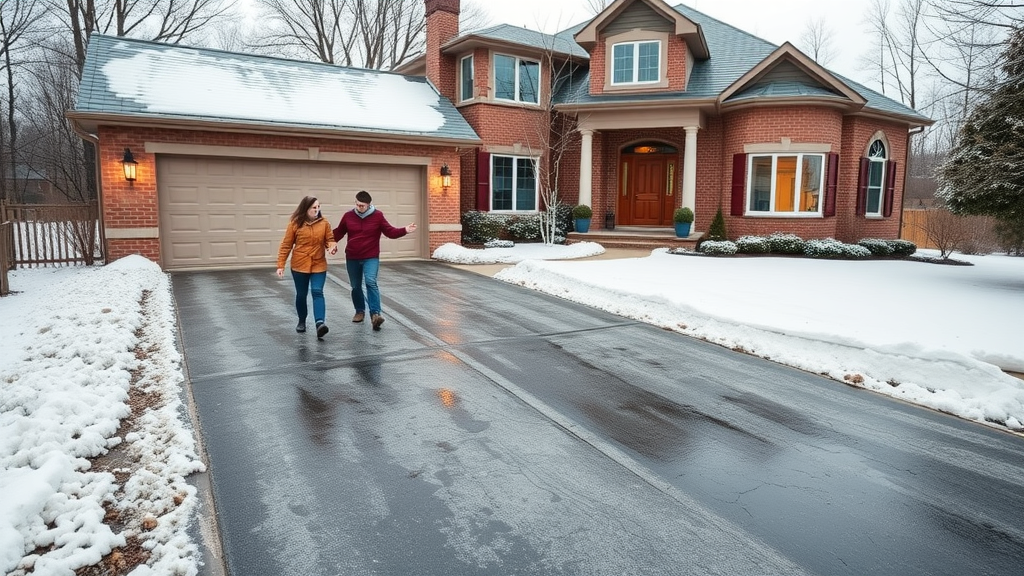
-
Minimize the risk of future, costlier foundation repair
-
Maintain curb appeal throughout winter driveway season
-
Increase driveway longevity
This step-by-step visual guide demonstrates everything from clearing debris and filling cracks to applying sealant and safe snow removal techniques—ensuring your winter driveway stays in top shape no matter the weather.
People Also Ask About How to Protect Driveway From Winter Damage
How do you protect your driveway from snow?
Answer:
To effectively protect your driveway from snow, start by sealing cracks and applying a quality sealcoat in the fall. Use a plastic shovel for snow removal to avoid scratching your concrete surface, and opt for gentle deicing chemicals like calcium magnesium acetate rather than harsh rock salt. Quick attention to snow and ice prevents moisture from working into the pavement, slows surface damage, and helps keep your driveway looking sharp and safe all season.
Is sealing a concrete driveway worth it?
Answer:
Absolutely. Sealing a concrete driveway provides an essential barrier against water, snow, deicing chemicals, and freeze–thaw cycles. This protective layer slows the penetration of moisture and contaminants, dramatically reducing the risk of cracks, surface pitting, and long-term deterioration. Regular sealing—about every 2–3 years—prolongs your driveway’s lifespan and maintains its curb appeal, making it a sound investment against preventable winter damage.
How do you winterize a driveway?
Answer:
Winterizing your driveway is straightforward: Clean away debris, repair cracks or potholes, and apply a high-quality sealant before cold weather sets in. For gravel driveways, fill and grade low spots to prevent ice formation and erosion. Limit the use of aggressive deicing chemicals, and employ proper snow removal methods—such as a plastic shovel or snow blower with adjustable height settings. These steps protect your concrete slab or asphalt surface from winter’s harshest elements.
Is salting a driveway worth it?
Answer:
Salting your driveway can help prevent ice buildup and increase safety, but it should be done thoughtfully. Many traditional salts, like rock salt, harm your driveway by seeping into cracks and accelerating freeze–thaw damage. Instead, choose safer deicers such as calcium magnesium acetate, and apply these sparingly. Always sweep excess material away after snow and ice melt to limit long-term surface damage, and prioritize non-chemical options whenever possible.
Expert Opinions: Quotes on Protecting Your Driveway From Winter Damage
“Investing in timely driveway protection measures each fall can save homeowners hundreds—if not thousands—of dollars in unplanned repairs come spring.” — Local Paving Expert
Essential FAQs for Homeowners on How to Protect Driveway From Winter Damage
-
When should I schedule concrete driveway repairs?
-
What deicing chemicals should be avoided?
-
How often should my driveway be sealed to limit winter damage?
Key Takeaways: How to Best Protect Your Driveway From Winter Damage
-
Immediate fall maintenance prevents costly winter driveway damage
-
Sealcoating and crack filling are affordable and effective
-
Proper winter driveway care extends the life of concrete slabs and asphalt
Ready to Protect Your Driveway From Winter Damage?
Call Us at 610 751-0998 or visitLegacyPavingPA.comto schedule your driveway inspection today before winter storms hit.
Don’t wait for harsh winter weather to ruin your driveway—act today and enjoy a reliable, attractive entryway all season long.
